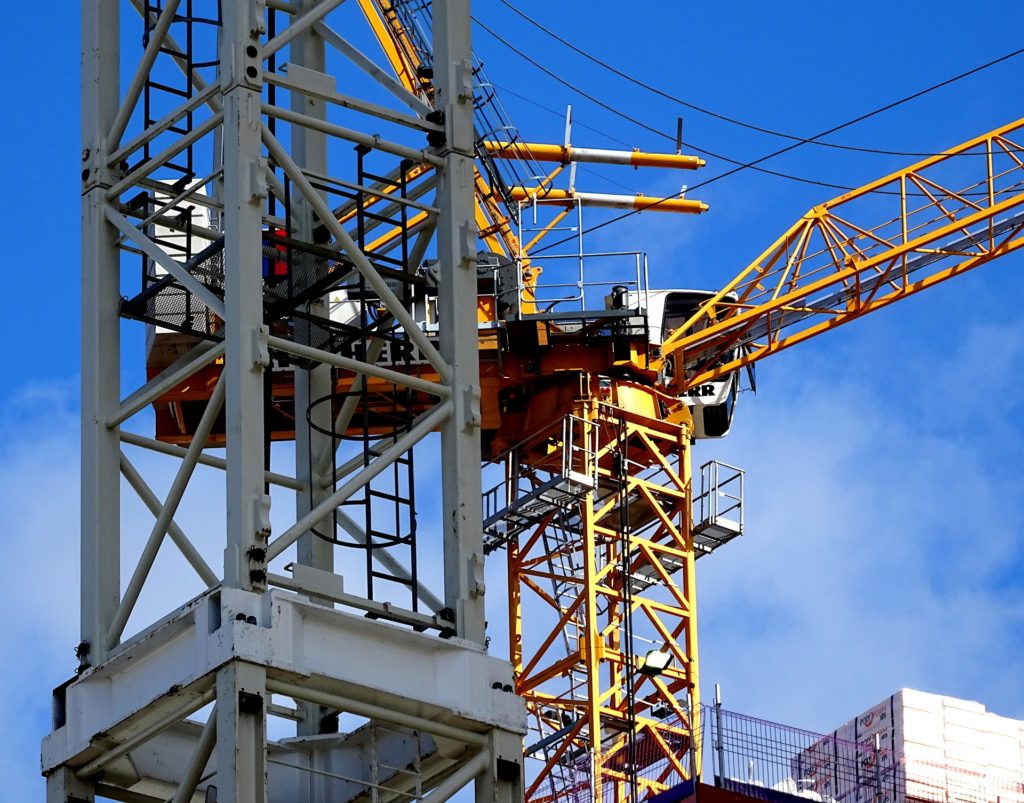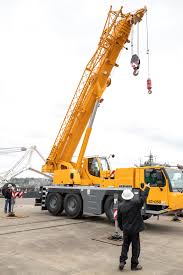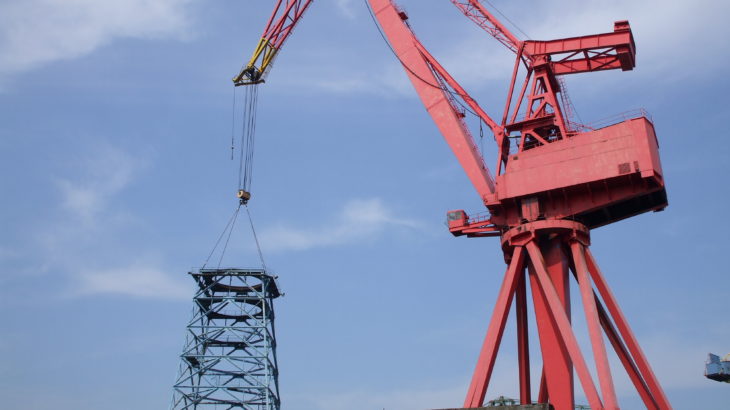With advancements in technology, lifting cranes have become a lot more common. Almost all construction and demolition projects, as well as transport or shipping of heavy materials, require powerful lifting cranes. However, the success of your project depends on choosing the right one. Doing so will also prevent potential accidents and damages, saving your time, money, and improving your reputation as a safe workplace.
Fortunately, many varieties of cranes are available today. You can find several different cranes designed for a specific function. However, choosing the right one from a plethora of options is a daunting task, especially for a novice.
Here are seven tips for choosing the right crane for your project.

1. Check the Load Weight to Be Lifted.
One of the first things you need to consider is the weight of the load to be lifted or moved using the crane. Naturally, you need a crane with a suitable lifting capacity to move the load. If you use a high-capacity crane for a small load, you will most likely end up wasting time, labor, and money. On the other hand, a low-capacity crane can lead to fatal accidents and cause damage to the load.
You also will need to determine what type of load you are going to move. The success of your project depends on it. For example, moving a liquid-filled tank will require special lifting conditions compared to moving a concrete block or a heavy machine. In short, the type of load will define the lifting services you need, which in turn will determine the type of crane you have to select.
2. Know the Lift Height.
The height of the lifting load is as critical as the load capacity of the crane. The length of the crane’s boom will depend on how high the loading material needs to go. If the construction is vertical, you will need a lift with a longer boom length. Plus, you will need to check the weather conditions, particularly the wind. The higher the lift height, the more likely that wind will sway the load, and this may lead to potential accidents. You also will need to adjust the amount of counterweight according to the lift height. Usually, a tower crane is the most likely option for higher lift height requirements.
3. Find the Moving Distance (Horizontal).
Just like the vertical distance, the crane also will need to travel some horizontal distance to pick up the load. If you need the crane to transport the equipment from one spot to the other, you will need to get a mobile crane with wheels. If there is a fixed path of movement, you can use a crane with rails.
The three primary factors, including the counterweight, support structure, and stability of the boom, will play a critical role in traveling this distance safely. Check the rated load weight for the crane. It determines the appropriate distance between the load at the end of the hook and the base of the crane.
4. Evaluate the On-Site Terrain.
All types of cranes require a support structure to hold them firmly to the ground. It is the most crucial element that stabilizes the crane and the load. So you will need to choose a suitable crane depending on the terrain.
For uneven terrain, you will have to choose the support width with careful consideration. If the terrain is rough (like on most off-road construction sites), you should use rough-terrain cranes specially designed for the same. For flat and firm terrains, using truck-mounted cranes is the best way to ensure mobility as well as stability.
You also will need to take a look at the weather conditions, such as wind, rain, snow, and heat. For example, if there is a lot of rain, you will need to operate on a muddy terrain, which will require you to select a special type of rough-terrain crane.

5. Evaluate Access to the Project Site.
Is the project site easily accessible for the crane? You would naturally want to drive and drop the crane off on the site. However, in the real world, you will encounter several obstacles, rules and regulations, and safety issues. Not all project sites will have paved access roads that are large enough to fit a crane. You will need to get creative when choosing the crane if the access to the site is restricted or challenging. For example, you can use a boom truck or a crane suited for rough terrain for hard-to-reach project sites.
6. Check Possible Safety Issues.
This involves a two-fold inspection. You will need to inspect not only the crane, but also its surroundings for potential safety hazards. You also may consider hiring a local crane inspector for the job because these people might know local weather conditions, site terrain, and regulations by heart.
Along with crane safety, you will need to take the potential obstacles into account, as well. You are likely to face several different types of obstacles when moving the crane to and around the site. These obstacles include overhead power cables, streetlight poles, overhead catwalks and scaffolds, buildings, and tall trees, among others. These are potential hazards that can cause accidents and damage to the load. If there are too many obstacles, getting a crane with good radio controls and a trained operator will be your best bet.
7. Check the Cost.
Finally, once you have satisfied all of these criteria, you need to check how much this piece of equipment is going to set you back. If you handle similar projects and need to make a long-term investment, you can buy a suitable crane. However, in most cases, you are better off leasing the types of cranes you want. Don’t forget to connect with multiple crane rental services, like Casey Crane Hire to compare the prices and services they offer to partner with the most affordable one.
The Final Word
The right type of crane can make or break your project. Hopefully, these seven tips will help you make the right choice as quickly as possible.




















It was really helpful when you said to inspect safety hazards in the surrounding areas. My brother was telling me last night about how he is wanting to look into renting a crane for his construction company in a couple of weeks, and he wants to make sure that he can rent the right one. I’ll make sure to pass these tips along to him once he finds a company to rent one from.
My uncle told me about a plan he has for his backyard. He needs to move a lot of heavy material and move it somewhere else without messing up his fence. A mobile crane with wheels sounds like a great way to transport equipment.
You made a good point when you said that I should consider the terrain of the project site and its accessibility before choosing a crane to rent. This will help me figure out what kind of crane I would need for the project. I’ll keep this in mind since I plan on renting a crane soon for the commercial building construction I’m handling downtown. Thank you.
If your business needs a crane or lifting equipment, it’s important to make sure you buy the right equipment for the job. To follow all of these tips, it is worth creating a checklist as cranes are major risk factors on construction sites.
It really helped when you elaborated on considering potential hazards before starting to operate a crane. Knowing my brother, he might try to rent and operate a crane on his own to start installing his house’s swimming pool next month. I’ll suggest he hires a professional crane company that offers trained operators.